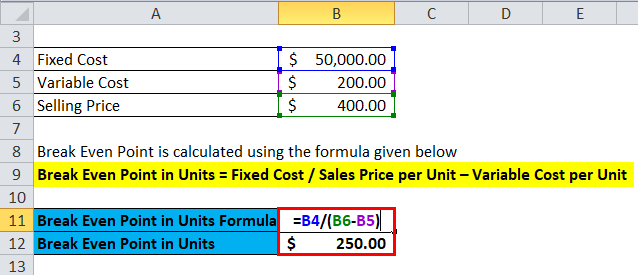Often classified as fixed assets, or
as plant and equipment, your plant assets include land, buildings, machinery,
and equipment that are to be used in business operations over a relatively long
period of time. It is not expected that you will sell these assets and convert
them into cash. Plant assets simply produce income indirectly through their
use in operations. Accounts payable is the amount of short-term debt or money owed to suppliers and creditors by a company. Accounts payable are short-term credit obligations purchased by a company for products and services from their supplier. Also known as the “acid test” ratio, this is a refinement of the
current ratio and is a more conservative measure of liquidity.
Cash held for some designated purpose, such as the
cash held in a fund for eventual retirement of a bond issue, is excluded from
current assets. A balance sheet is designed to communicate the “book value” of a company. It’s a simple accounting of all of the company’s assets, liabilities, and shareholders’ equity, and offers analysts a quick snapshot of how a company is performing and expects to perform. The profit calculations you receive reset back to zero once you reach your company’s year-end, this is to reflect your company’s profits during each year. Your annual accounts will show the total profit available at the end of your company’s year.
Accounts Payable vs. Accounts Receivable
Obviously, such a method does not seem to be relevant to trade receivables/debtors where normally there is no interest payment to spread. FRS 26 and IAS 39 therefore allow short-term receivables/debtors with no stated interest rate to be measured at the original invoice amount, if the effect of discounting is immaterial. This would apply to trade receivables/debtors and therefore, they will still be carried at the invoice amount. However, FRS 26 and IAS 39 state that an entity must assess at each balance sheet date whether there is any objective evidence that a financial asset or group of financial assets is impaired. If there is objective evidence that an impairment loss on the financial assets has been incurred, the loss must be recognised in profit or loss.
The terms ‘bad debts’ and ‘irrecoverable debts’ will still be used and will relate to specific debts which are not considered to be collectible and so are written off to the income statement/profit and loss account. However, allowances are still allowed if they are based on past experience, and on the amount of cash which will be collected. The effect on the CAT papers and ACCA Qualification Paper F3 is limited. At one end is the company that has a surplus of assets, healthy distributable reserves and the ability to pay its creditors when required – in other words, a healthy, solvent company. On a day-to-day level, directors should always consider the company’s creditors; no business should disregard its debts and liabilities.

Once this is done and you are happy with the accounts you need to sign and return the approval letter (scanned copy via email is fine) and we can finalise the accounts for you. This has been a guide to the top difference between creditor vs Debtor Here we also discuss the Creditors vs Debtors key differences with infographics and comparison table. Thus, a Creditor vs Debtor is important for every business as they play a huge part in running the business and its liquidity. Access and download collection of free Templates to help power your productivity and performance.
What Are Accounts Payable?
This will only be acceptable if the formula can be shown to produce an estimate sufficiently close to the method specified in IAS 39/FRS 26 which requires an estimate of the cash which will actually be received. Impairment of individually significant balances must be separately assessed and an allowance made when it is probable notes receivable vs accounts receivable that the cash due will not be received in full. SumUp Invoices allows you to view and track payments owed to your company. You can sort and filter your invoice list to show only unpaid/overdue invoices, and also create account statements for your customers to outline how much they have paid and any balance owing.
Any overdrawn director’s account must be repaid to the company within 9 months of the accounting reference date or else a tax surcharge of 32.5% will apply under s455 CTA 2010. Also, most of the time, auditors need to look at the standing amount of debtors and creditors through the company’s financial statement. These are interdependent and equally essential for the accounting process. After looking into the meanings of the debtors and creditors, you should know by now that entities running businesses need these two parties for their financial transactions. Without accurate information about the financial position of the company, external and internal users could be misled about the data needed to make informed decisions about investments. So, let’s look at the following points that cite the differences between the debtor and creditor.
Upgrading to a paid membership gives you access to our extensive collection of plug-and-play Templates designed to power your performance—as well as CFI’s full course catalog and accredited Certification Programs. Impairment of individually non-significant balances can be measured on a portfolio or group basis. Any receivables that are not thought to be impaired are included in the group assessment. A trading company – AWA – paid a dividend to its parent company, Sequana.
How to Conduct Financial Statement Analysis
A debtor is a person or an organization that agrees to receive money immediately from another party in exchange for a liability to pay back the obtained money in due course of time. In other words, a debtor owes money to another person or organization. The amount owed a debtor repays periodically with or without interest incurred (debt almost always includes interest payments). The main differences that will affect these exams are those in terms of terminology.
- A creditor without a lien (or other legal claim) on the company’s assets is an unsecured creditor.
- If the debt is issued in the form of financial securities (e.g., bonds), the debtor is referred to as an issuer.
- This has been a guide to the top difference between creditor vs Debtor Here we also discuss the Creditors vs Debtors key differences with infographics and comparison table.
- A creditor is an entity, company or person that has provided goods, services or a monetary loan to a debtor.
- Some creditors are referred to as secured creditors because they have a registered lien on some of the company’s assets.
For example, you invoice for £1,200 gross and are on 16.5% Flat Rate percentage we would include £1,002 in the accounts being £1,200 less £198 (£1,200 X 16.5%). This is where various figures from the profit and loss account and balance sheet are shown in more detail; a number next to the category on the face of these pages indicates it is covered by a note. Yes, included in the service we provide to you is the provision of different types of reference, including information requested as part of a mortgage application. Please confirm to your accountant the details of what you require and we can prepare this for you. Thus, your trade payables will amount to $500 for the invoice you got.
Your details
It said they should not have paid the dividend while AWA had potentially significant long-term liabilities. In Account Form, your assets are listed on the left-hand
side and totaled to equal the sum of liabilities and stockholders’ equity on
the right-hand side. Another format is Report Form, a running format in which
your assets are listed at the top of the page and followed by liabilities and
stockholders’ equity.
Therefore, if a dividend is declared after your company’s year-end based on the previous year’s profit it will show a loss on your monthly profit calculation sheet. However, this does not mean that your company is running at a loss, it is simply a reporting process. In the world of accounting, aged creditor reports are documents that list individual supply entities. These reports also display outstanding debt by the name of the supplier. The debtor is any person or company that owes you money, while a debt refers to a borrowed loan from a bank or any institution.
The accrued charge remains $1,000 because you still owe the consultant money; they just haven’t sent out an invoice yet. For example, when company AI lends money to company KK, AI assumes the role of creditor, and KK is the debtor. When company KK sells goods to company AI on credit, KK is the creditor, and AI is the debtor. Further bad debts amount to ₹2,500, Provision for Bad debts to be made at 5%, Provision for Discount to debtors @2%. Keep track of money your company is owed with online invoicing software. Rather, the duty is engaged once insolvency occurs or is on the verge.
The roots of Chinese developer Country Garden’s debt woes – Nikkei Asia
The roots of Chinese developer Country Garden’s debt woes.
Posted: Wed, 30 Aug 2023 08:51:00 GMT [source]
The credit risk groups are to be assessed for impairment using historical loss experience for each group. Such historical loss experience would be adjusted to reflect the effects of current conditions. Usually, each creditor has a specific agreement with their debtors about the terms of payment, discounts, etc.
What is Debtor vs. Creditor?
Generally, a debtor can initiate the bankruptcy process through a court. However, bankruptcy laws and rules can widely vary among different jurisdictions. Some creditors, such as banks and other lenders, have lent money to the company and will require the company to sign a written promissory note for the amount owed. When a promissory note is required, the company borrowing the money will record and report the amount owed as Notes Payable. If information becomes available that identifies losses on a receivable in the group then it is removed and individually assessed. The collective assessment of impairment requires the splitting of the list of receivables into groups of trade receivables that share similar credit risk characteristics.
This ratio expresses the relationship between capital contributed by creditors
and that contributed by owners. It expresses the degree of protection provided
by the owners for the creditors. The higher the ratio, the greater the risk
being assumed by creditors. A firm with a low debt/worth ratio usually has greater flexibility to
borrow in the future.

Recent Comments